
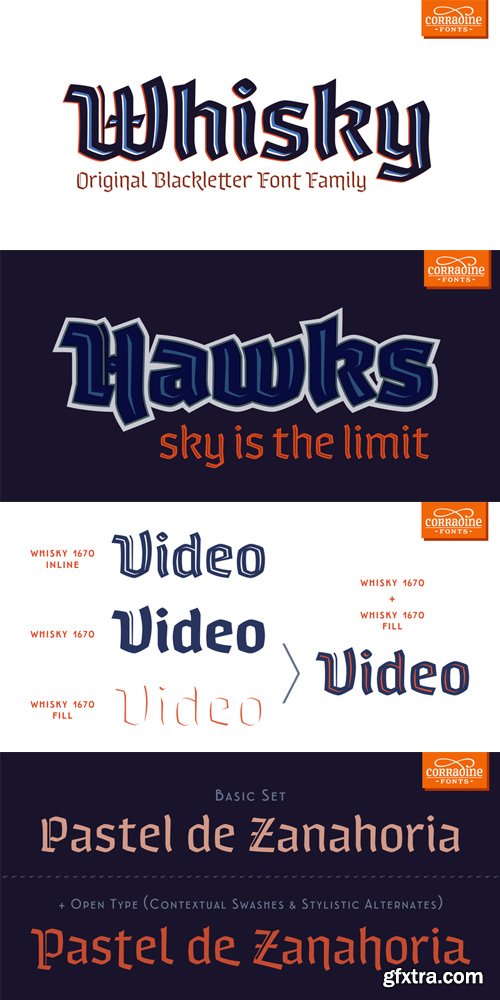
Whisky Font Family $85 | 21 x TTF | Turkish Support
https://www.myfonts.com/fonts/corradine/whisky/
Whisky is a blackletter font family with a casual touch that makes it look friendly and current. The stroke varies its thickness and angle endings making it form very dynamic bodies of text. The family includes seven weights, each with a fill and a inline version that allow you to develope more colorful applications overlaping them as layers. Also by using Open Type features you can access to an extended set of characters wich contains swashes and alternative endings to make more playful compositions.
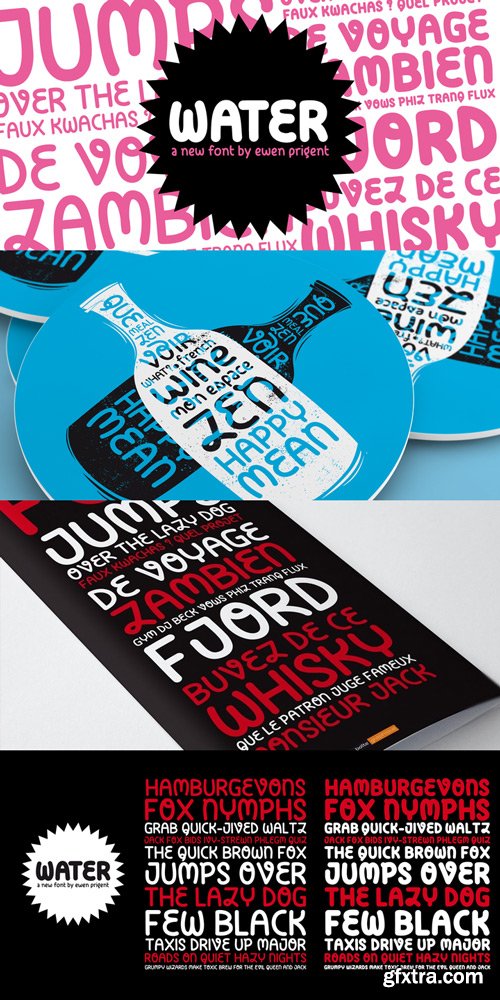
Water Font Family $40 | 2 x TTF and OTF
http://www.myfonts.com/fonts/laboitegraphique/water/
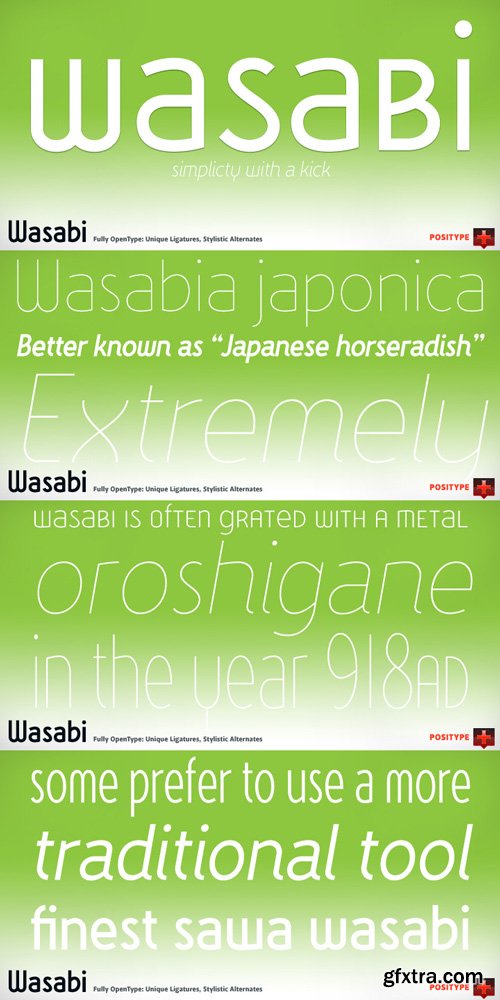
Wasabi Font Family $325 | 24 x TTF and OTF
http://www.myfonts.com/fonts/positype/wasabi/

Wanderlust Letters
Wanderlust is a beautiful hand painted script that comes with a set of extras. All letters have been carefully painted giving your words a wonderful flow. Wanderlust can be used for fashion, apparel, stationery, magazines, film, books and marketing.
OTF + TTF | 1 Font | JPG Preview | 17.1 Mb RAR
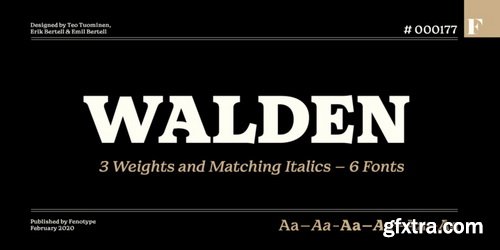
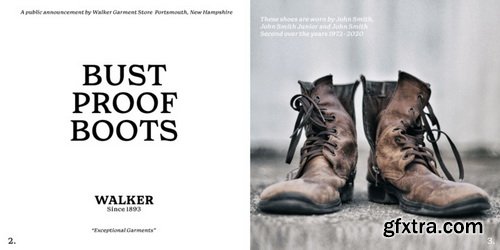
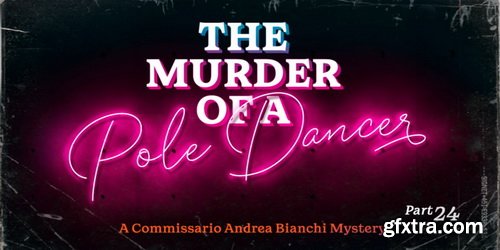
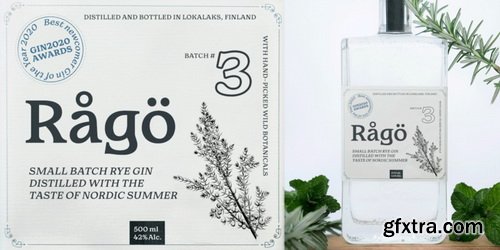
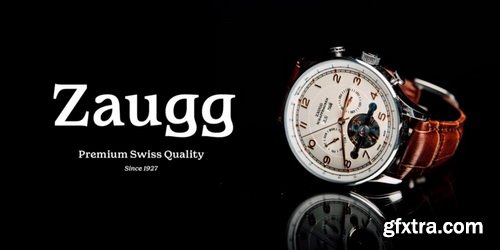
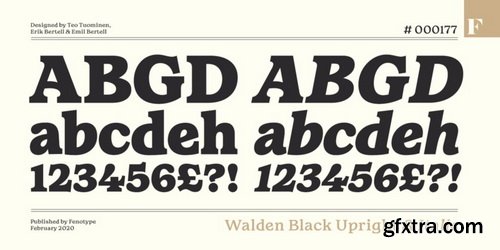
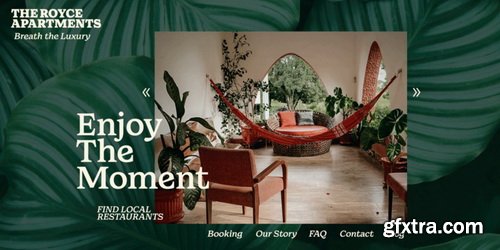
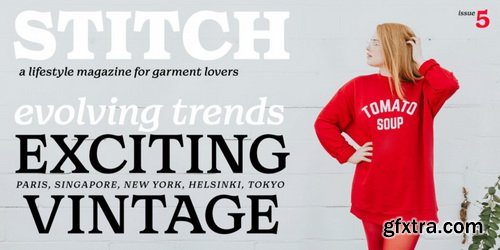
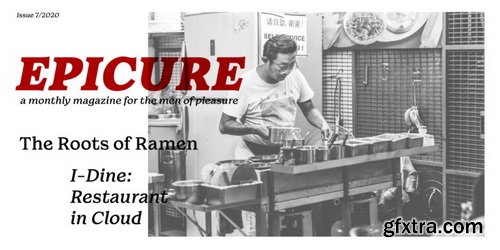
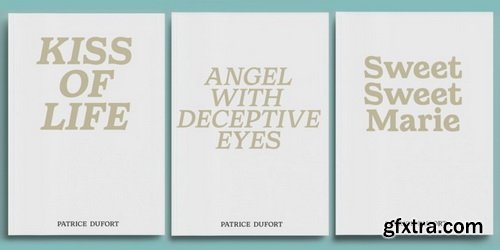
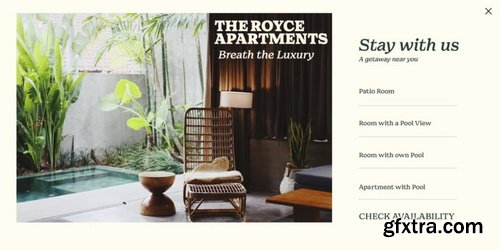
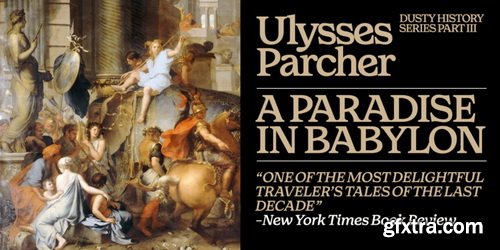
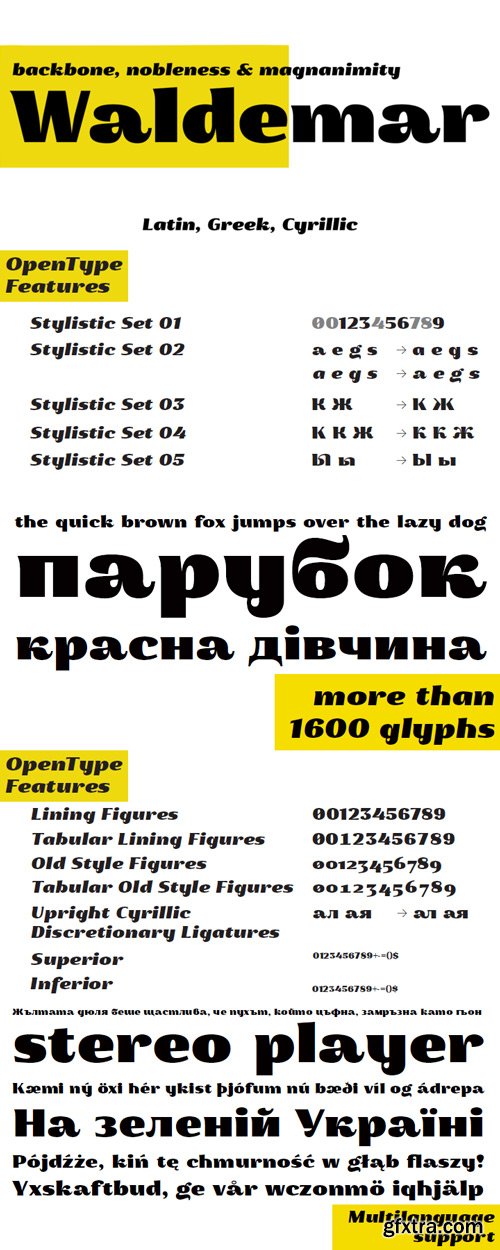
Waldemar 4F Font Family $30 | 2 x TTF and OTF
http://www.myfonts.com/fonts/4thfebruary/waldemar-4f/
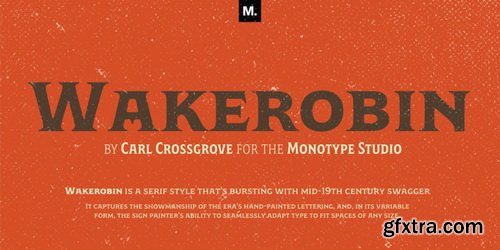
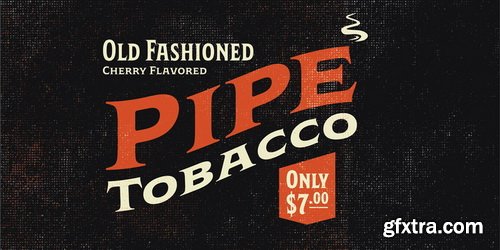

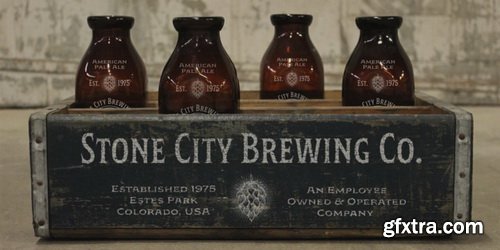
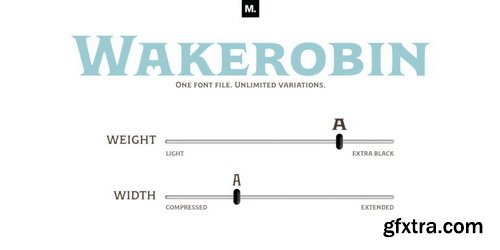
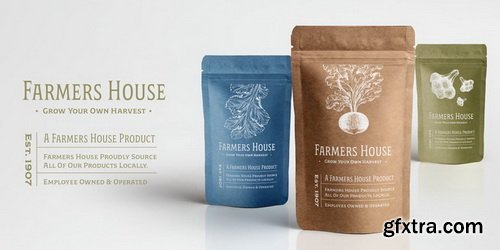
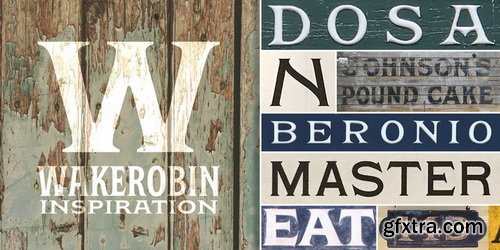
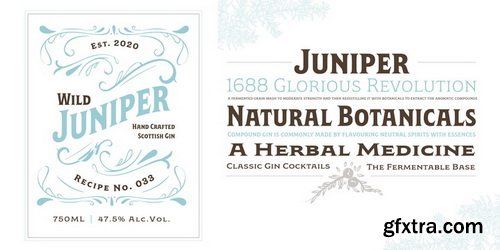
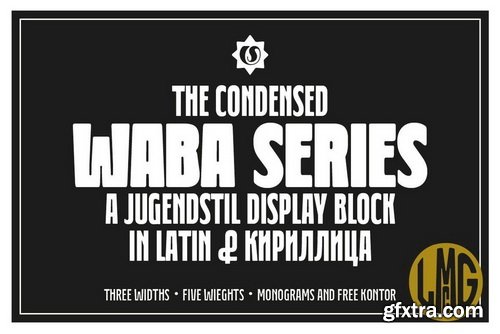
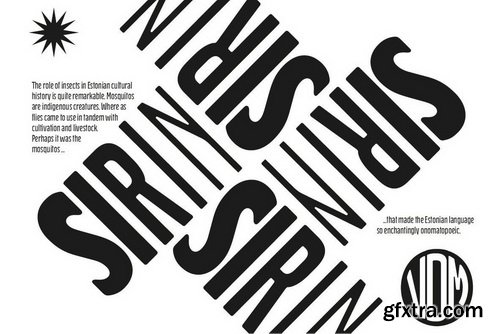
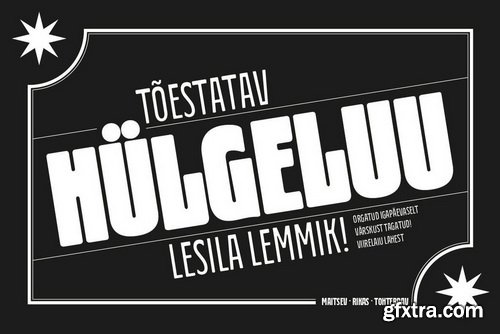
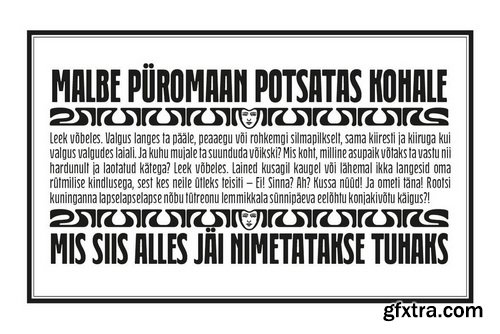
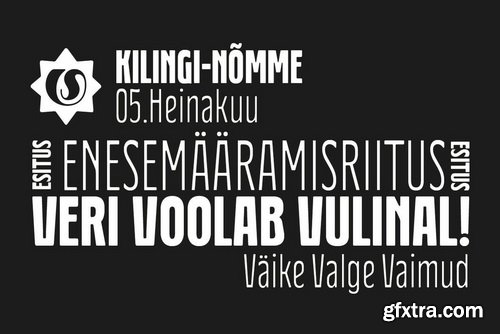
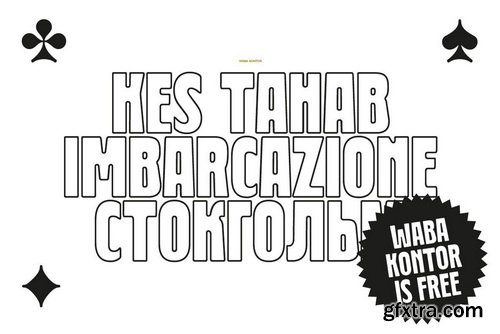
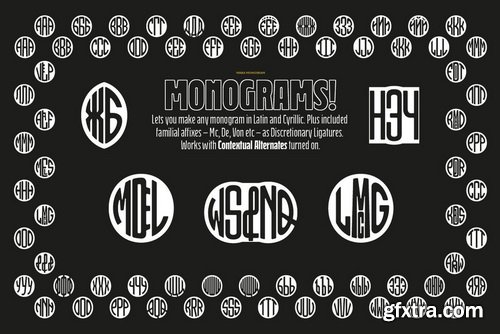
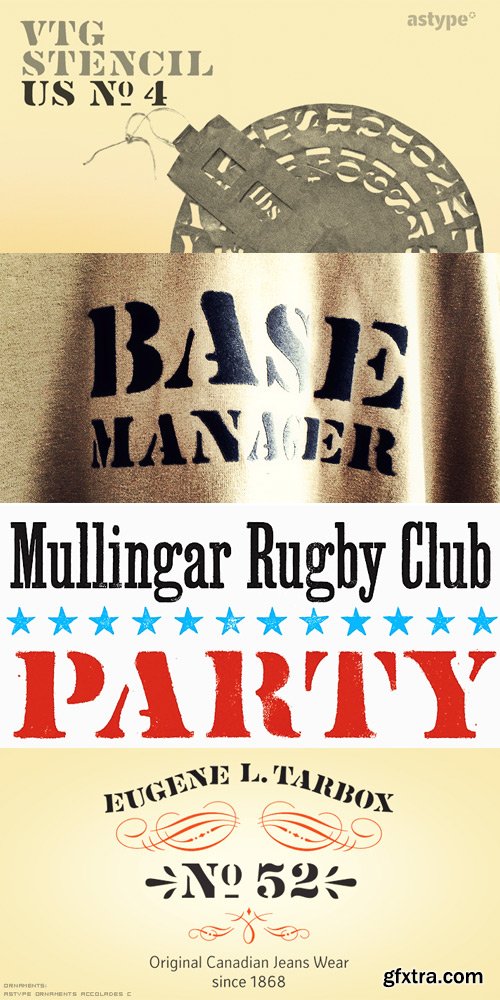
Vtg Stencil US No4 Font Family $85 | 4 x TTF | Turkish Support
http://www.myfonts.com/fonts/astype/vtg-stencil-us-4/
The Vtg Stencil fonts from astype are based on real world stencils. The US No.?4 design was derived from a typical antique American stencil-plate. This revolving stencil-plate was invented by Eugene L. Tarbox and patented in 1868. It was a mass produced product and a very common tool in the United States.In case of US No.?4 an original early plate from New York Stencil Works was used. The Regular font style is a clean font design featuring a full standard Type1 glyph set including some typical stencil ornaments and tabular figures. The Paint font style is made from true stenciled letters and features all the letters of the stencil-plate only.
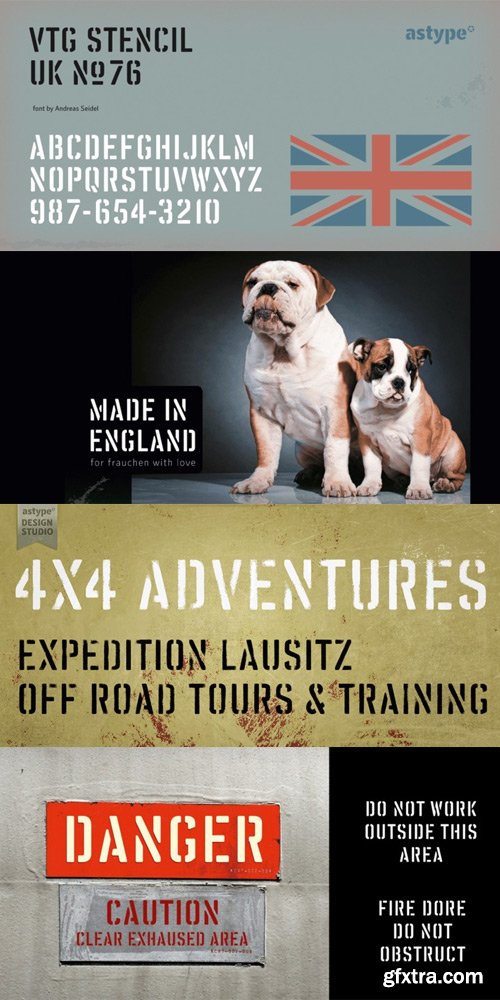
Vtg Stencil UK No76 Font Family $152 | 4 x TTF | Turkish Support
http://www.myfonts.com/fonts/astype/vtg-stencil-uk-no-76/
The Vtg Stencil series of fonts from astype are based on real world stencils. The UK No.?76 design was derived from authentic stencil plates from Great Britain.UK No.76 comes in four flavours – the Regular style and the Alt style with alternate and shorter forms of the letters M, W and the figure eight. Since summer 2015 both styles are now available in a Rough version with an extended glyph randomizer.

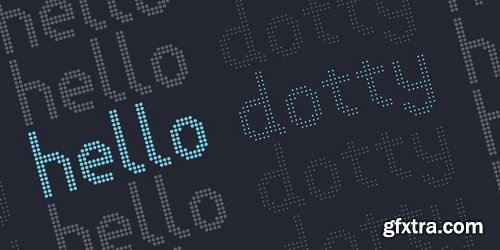
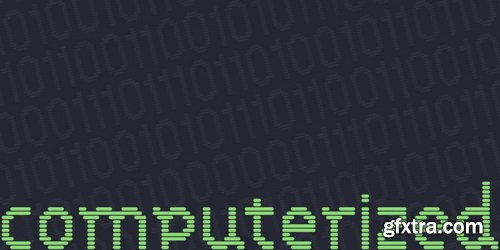
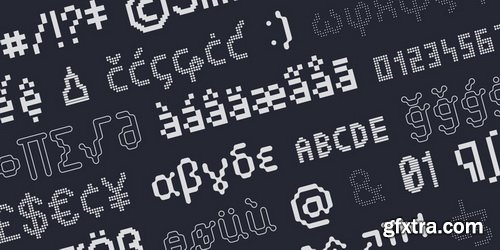
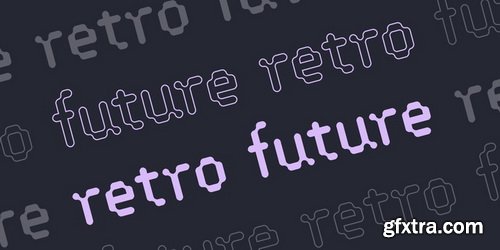
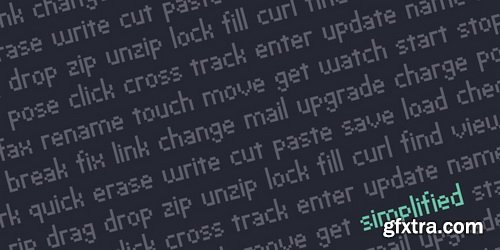
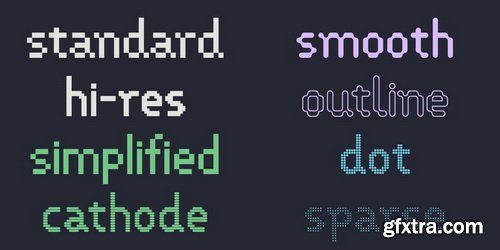

https://www.thegnomonworkshop.com/tutorials/creating-a-combat-finishing-takedown
Mastering a finishing takedown animation is made easier with a professional workflow that’s been tried and tested through years of production experience. Senior Animator Patrick Przybyla has worked on a variety of AAA action titles and is now sharing his proven techniques in over three hours of detailed training. Best suited for intermediate-level artists, this workshop kicks off in Maya, the primary animation package that Patrick has used throughout his career in games. He shares insights into his selection process when choosing rigs and models for heroes and enemies, and explains why Kiel Figgins’ rigs — as used in this workshop — are known and trusted by so many industry professionals.
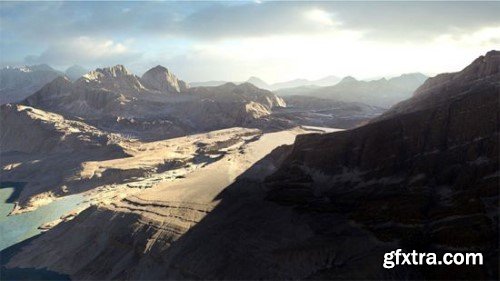

In this series, Martin Teichmann, Environment Modeler at Naughty Dog, takes you through his complete production workflow to build a stylized game ready environment; a process that requires not only technical and artistic knowledge, but also insight into the mechanics of game play in order to deliver the best experience for the player.
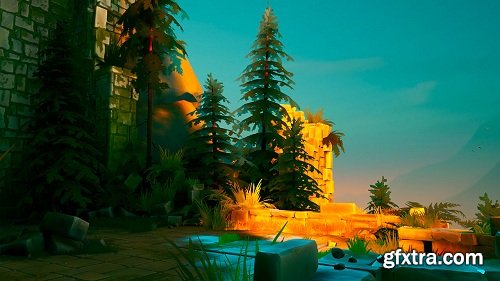
In this series, Martin Teichmann, Environment Modeler at Naughty Dog, takes you through his complete production workflow to build a stylized game ready environment; a process that requires not only technical and artistic knowledge, but also insight into the mechanics of game play in order to deliver the best experience for the player. In this second volume of the series, Martin guides you through the creation of the rock and vegetation assets needed for a detailed game environment based off the references and block meshes created in Volume One. He covers the modeling process for high-poly rocks in ZBrush, how to create the low-poly using 3dsMax, then creates the rock textures using Substance Designer. Assets are imported into Unreal where material creation is addressed as well as Rock LODs. Martin creates the stylized trees in Photoshop and 3dsMax, imports them into Unreal and demonstrates the technical setup for animated foliage using vertex animation. At the end of this volume, you should have a good understanding of organic asset creation and be ready to move on to Volume Three where Martin discusses final scene assembly in the Unreal Engine.
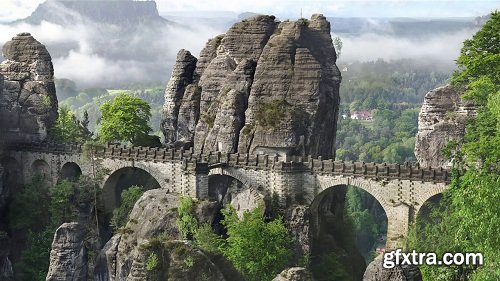
In this series, Martin Teichmann, Environment Modeler at Naughty Dog, takes you through his complete production workflow to build a stylized game ready environment; a process that requires not only technical and artistic knowledge, but also insight into the mechanics of game play in order to deliver the best experience for the player. In this first volume of a three part series, Martin guides you through his ideation process, reference gathering and the initial stages of development for a large environment. He creates a meaningful block mesh in 3dsMax which can then be turned into modules to split the environment creation process into small tasks. Using the example of an arch module, Martin demonstrates the asset’s creation through low-poly modeling and texturing in 3dsMax, hi-poly sculpting in ZBrush and texture generation in Substance Designer. Basic software knowledge is required as the workshop primarily focuses on workflow and the development of a unique art style. At the end, students will have a thorough understanding of the layout and early production process for game environments, and be ready for volume two where Martin moves on to the terrain, rocks and foliage.

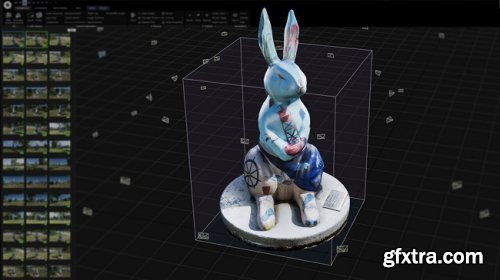
https://www.thegnomonworkshop.com/tutorials/complete-photogrammetry-workflow
If you’re looking for a complete step-by-step walkthrough of a professional photogrammetry process, look no further than this 3.5-hour workshop by Lead Digital Projects Engineer, Charleston Silverman. This in-depth workshop provides you with the techniques and knowledge you need to scan objects from the real world into the virtual. Charleston kicks off the workshop with the capture before demonstrating the image processing part of the workflow using Photoshop, Adobe Camera RAW, and Adobe DNG. From there, it’s all about the solve, for which Charleston brings both RealityCapture and Metashape into the fold. Mesh retopology is handled and demonstrated in ZBrush, while the effective texture generation and cleanup process employs the power of Substance Painter. As the final step, the assembly of the scene takes place in Unreal Engine — although, the process and techniques covered can be used with any renderer of choice. This detailed workshop covers a vast array of information and techniques, discussing everything from the dos and don’ts of capturing to the subtle details for image adjustments and solves that you won’t want to miss. Charleston’s thorough instruction not only teaches how to set everything up correctly to achieve the best results but also advises on the importance of every step of the process.
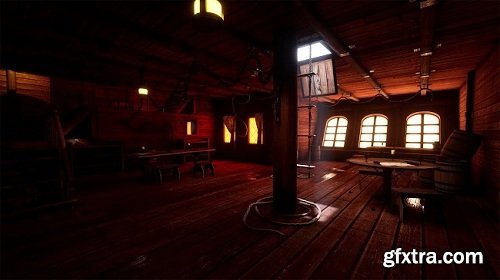
In Complete Lighting in Unreal Engine, Charleston Silverman walks you through the lighting system and tools available in Unreal Engine 4. Using a pirate ship cabin created for this tutorial, this environment utilizes features and techniques such as modulated and static mesh emissive lighting to bounce and volumetric lighting. Some of the topics covered include: general lighting dos and don’ts, standard light actors: points, spot, and directional, dynamic lighting techniques, light functions, IES profiles and post processing. Charleston then covers techniques to improve optimization, quality and performance as well as config modification to enable advanced features. For those looking for a thorough understanding of the lighting system in Unreal Engine, this title offers valuable insight, tips and techniques.

This tutorial teaches how to create dynamic and exciting combat animations in a step-by-step method that is used by many professional animators. The core foundations of combat are covered such as strong posing, aggressive timing and appeal. Riot Games’ Senior Animator Jason Shum shares his process from the initial idea stage to final polish.
Gnomon – Cleaning Up Scanned Assets for Production with Scott Denton
http://www.thegnomonworkshop.com/tutorials/cleaning-up-scanned-assets-for-production
Discover how to take pre-existing scanned assets and quickly and professionally clean them up using a combination of Wrap 3, ZBrush, and Maya. This workshop by Modeler and Generalist, Scott Denton, details the clean-up of a scan created by NYCap3D using the state-of-the-art photogrammetry solution, RealityCapture, along with assets produced by 3D Scan Store. A brief preview of Zoo Tools is also covered. Throughout the course of the workshop, Scott discusses how to use Wrap 3 and ZBrush to transfer textures and displacement details from the 3dScanstore mesh. He also goes over some of the specific setups and essential tools inside of both Wrap and ZBrush that help to speed up the overall workflow. Scott teaches the important export options that you need to know and includes a demonstration on how to hook the textures up in Maya to achieve a render worthy of being passed on to a look-development artist. Helpings of industry tips are included along the way, particularly when it comes to what look-dev artists expect of modelers, plus tricks for organizing and naming your files like a pro.
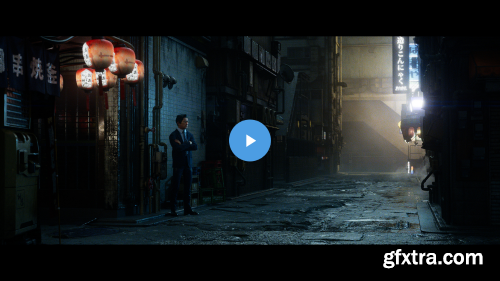
Top Rated News
- Finding North Photography
- Sean Archer
- John Gress Photography
- Motion Science
- AwTeaches
- Learn Squared
- PhotoWhoa
- Houdini-Course
- Photigy
- August Dering Photography
- StudioGuti
- Creatoom
- Creature Art Teacher
- Creator Foundry
- Patreon Collections
- Udemy - Turkce
- BigFilms
- Jerry Ghionis
- ACIDBITE
- BigMediumSmall
- Boom Library
- Globe Plants
- Unleashed Education
- The School of Photography
- Visual Education
- LeartesStudios - Cosmos
- Fxphd
- All Veer Fancy Collection!
- All OJO Images
- All ZZVe Vectors


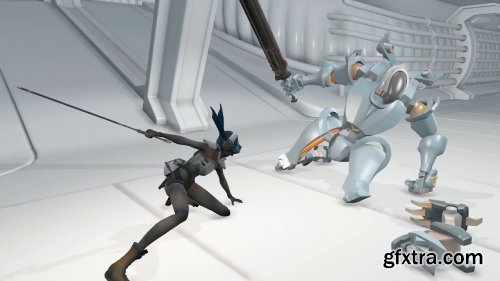
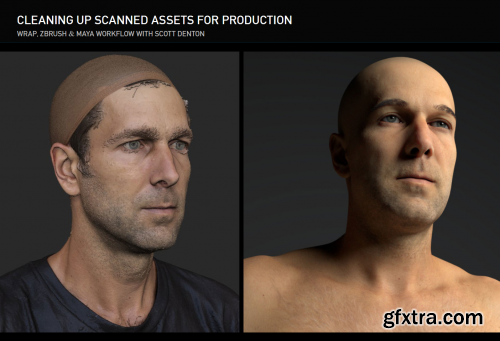
 Categories
Categories







